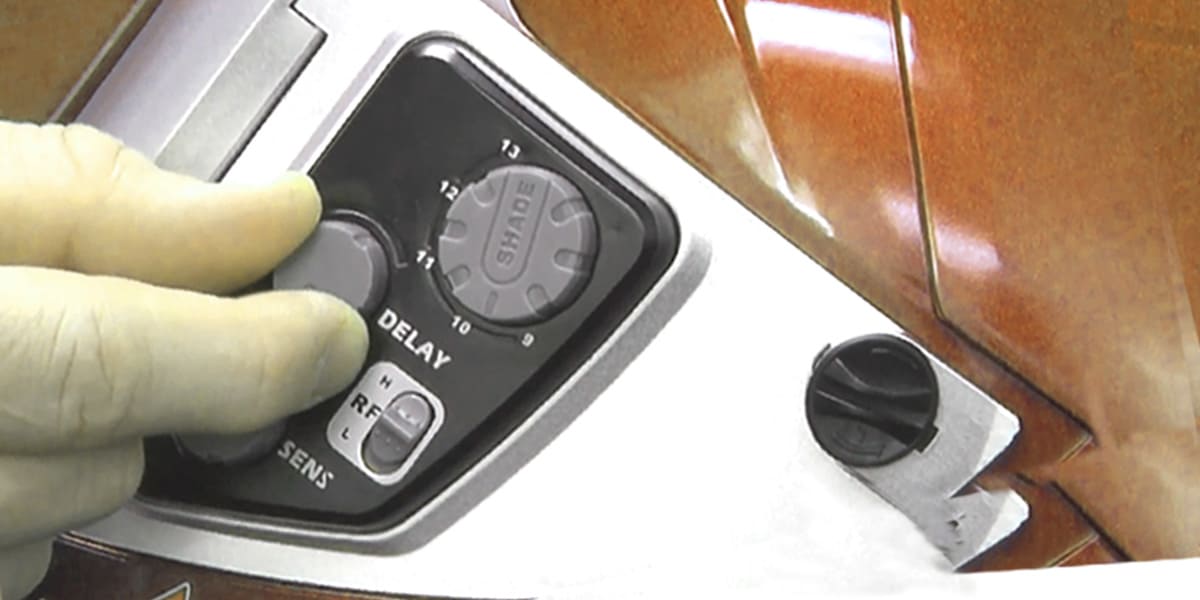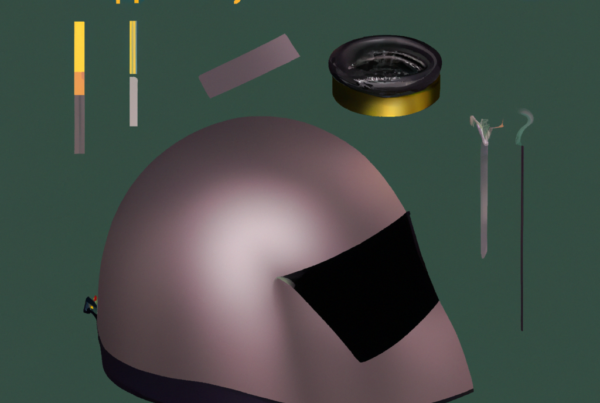Auto darkening welding helmets are one of the most useful tools for welders. After all, an auto darkening welding helmet limits the amount of steps and precautions welders have to use during welding to protect themselves. Let’s face it: there’s no way a welder could succeed without a great auto darkening welding helmet.
The best feature of an auto darkening welding helmet is argumentatively the auto darkening feature. With this feature, your welding helmet will automatically change the amount of light your lens filters. In other words, you don’t have to worry about manually changing the lenses. But, that doesn’t mean that there aren’t other features you will have to adjust.
Adjusting an Auto Darkening Welding Helmet
Whether you’re a beginner or professional welder, adjusting your welding helmet can be a challenge. That’s why we created a guide to help you adequately adjust your auto darkening welding helmet. So, continue below to learn our tips and tricks that makes adjusting your welding helmet extremely easy!
#1 Fit
Many beginner welders are usually surprised to discover that most auto darkening welding helmets have adjustable fits. Of course, you won’t be able to tailor the overall structure or fit of an auto darkening welding helmet. But, you will be able to tighten or loosen the general fit.
That being said, use this feature to your advantage. If you discover your head feeling fatigued or strained after a weld, then you should consider loosening the fit adjustments. On the other hand, if you feel like your helmet might fall off during a weld, then tighten the fit adjustments.
#2 Sensitivity
The sensitivity of an auto darkening welding helmet is argumentatively the most important feature of a welding helmet. After all, the level of sensitivity ultimately determines how much light your welding helmet filters out.
That being said, your helmet’s sensitivity should be just right. This level is ultimately personal. So, it’s most likely going to take some trial and error before you discover the right amount of sensitivity for you.
Generally, most welders find that the sensitivity setting that comes pre-programmed in their welding helmet is perfect. But, like I said if you’re unhappy with the setting, play around with the sensitivity adjustment knob until you’re happy. Worst case scenario, you toy around with the adjustment knob, but discover you liked the original setting the most. Then, you could just simply refer to the manual and set it on the manufacturer’s level.
#3 Reaction Time and Delay
Reaction time and delay are other important features on an auto darkening welding helmet. These features ultimately determine how long your helmet will take to alter its lenses depending on the light environment.
For reference, lower settings usually mean quicker reaction times and higher settings usually mean slower reaction times. Like sensitivity, reaction time and delay are ultimately personal preferences that are dependent upon a variety of factors such as:
- Your personal reaction and reflex time.
- Where you weld.
- What type of welding you do.
- How long you weld.
Since the reaction time and delay are personal preferences, there is are no right and wrong settings. But, the general advisory level for reaction time is anywhere from .25 to .8 seconds. Anything less than .25 seconds might be too fast, and anything above .8 seconds is most likely too slow and might be a sign of an auto darkening welding helmet that isn’t as durable or reliable as other auto darkening welding helmets.
Once you choose a reaction time, apply it by doing the sun test. If you’re unfamiliar with the sun test, it’s basically the process of waving your hands in front of your welding helmet while you look at the sun. If your welding helmet has too quick of a reaction time, then the lens might lighten and darken too quickly if your hands are moving slowly. But, if your welding helmet has a slower reaction time, then the lens should remain darken throughout the entire time you wave your hands.
If you need help with reaction time recommendations, check out your welding helmet’s manual! Usually, welding helmet manufacturers include recommended reaction time settings for their welding helmets, so you can truly get the most out of your helmet.
#4 Shades
Lastly, it’s important to adjust the shade of your auto darkening welding helmet. While your auto darkening welding helmet will darken the lenses by itself, it still comes with different levels of shade. After all, if you’re welding in an extremely light area, there’s only so much light the auto darkening helmet can protect you from. That’s where extra dark shades step in!
Most modern auto darkening welding helmets have shades ranging from level nine to level thirteen. Of course, level nine is the lightest shade on that spectrum and level thirteen is the darkest shade. For reference, level thirteen is often used for extremely light environments or industrial welds. You could even stare directly at a solar eclipse with a level thirteen shade.
Like every other feature in this article, the shade you use is ultimately dependent on personal preference. But, you should also consider the environment you weld in and the scale of your weld because industrial welds typically requires darker shades.
If you’re unsure about what shade you should use, simply adjust your settings to the darkest shade option. After all, it’s better to be safe than sorry.
The Bottom Lines
Adjusting your auto darkening welding helmet might take a lot of trial and error, and that’s okay. Although adjusting your auto darkening welding helmet might seem like a pain in the butt, it’s ultimately an advantage because you can tailor your welding helmet to your specific needs and preferences.
If you buy a auto darkening welding helmet with external knobs, then adjusting your welding helmet will be extremely easier and more efficient than if it had internal knobs.
Overall, if you’re truly feeling stuck or lost in terms of adjusting your auto darkening welding helmet, simply refer to your helmet’s manual. Like previously stated, most helmet manufacturers include adjustment recommendations, so you can get the most performance out of your welding helmet.




